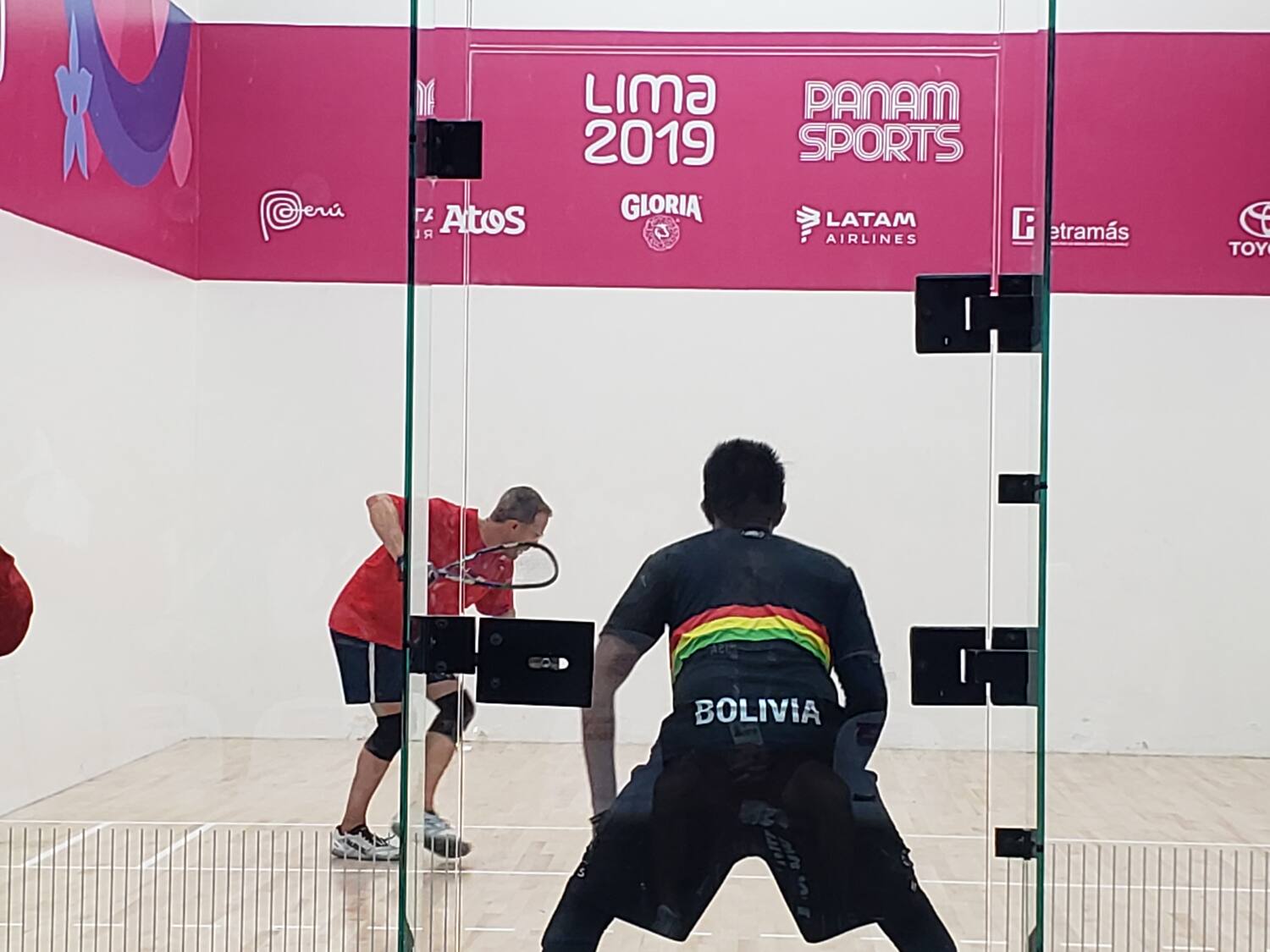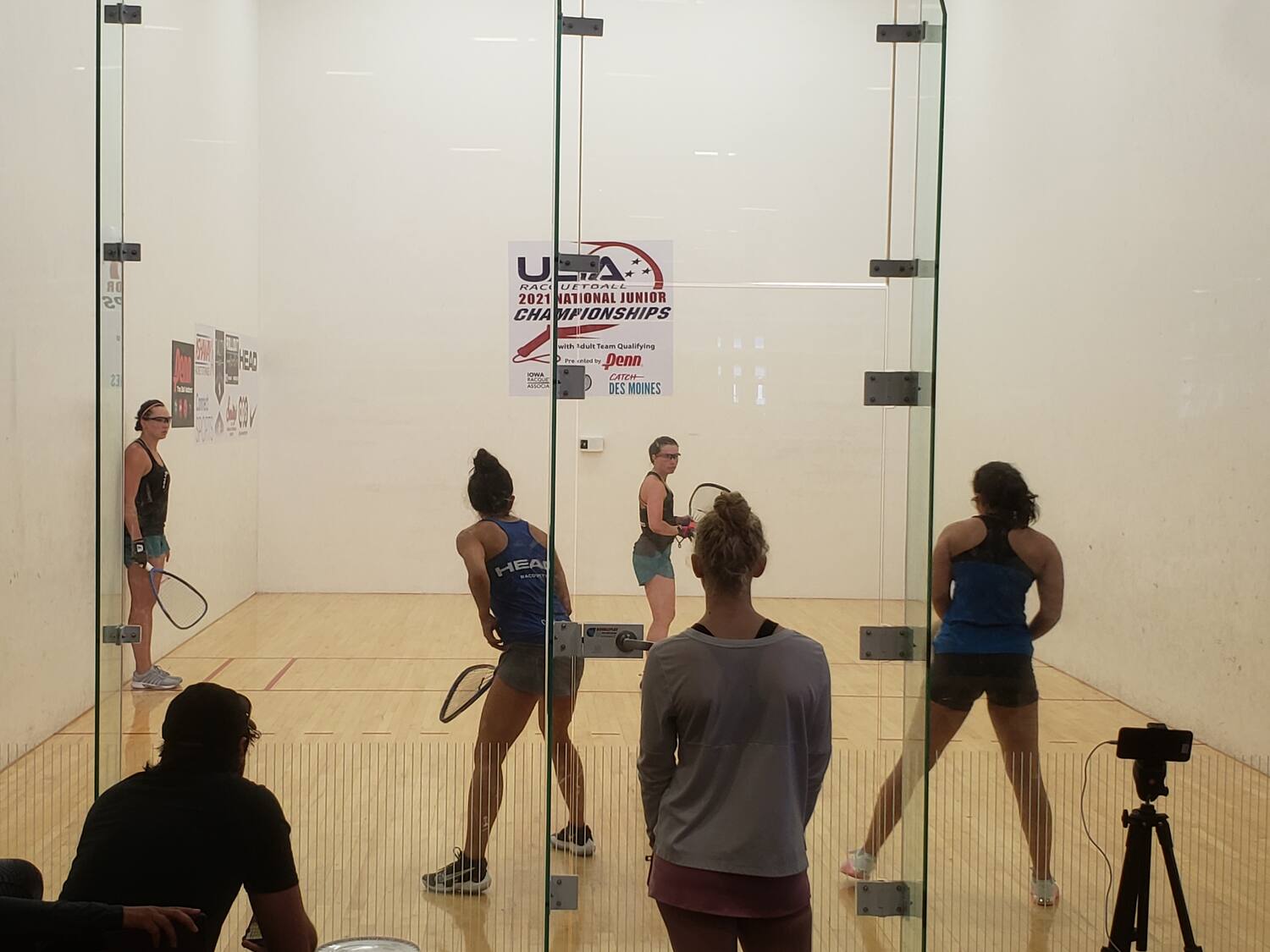
Rules Rule!
by Dan Horner, USAR Rules Commissioner
In May, the USA Racquetball Board of Directors approved Dan Horner of Ankeny, Iowa, as USAR’s National Rules Commissioner. Dan has served on the National Rules Committee for several years and has now become its Chair.

With a deep knowledge and understanding of the rules of the game, Dan welcomes questions from members and will respond timely along with featuring a few each month in this USAR Serving Up the News resurrection of the well-read “What’s the Call” that Otto Dietrich made popular in Racquetball magazine over many years.
The time has come -- let’s hear from Dan!
Last month I attended the 2021 USA Racquetball Junior Championships & Adult Team Qualifying in Des Moines. Not only was this the first national tournament USAR was conducting since the pandemic began, but it was also my first since taking the reins as National Rules Commissioner. I was surprised and pleased at how many questions came my way during the week, but even more so how many times I was called over to a live match to help answer a question by a referee that could make a difference in the outcome of the game/match. In each circumstance, I simply asked the referee directly what they needed assistance with. I made sure they understood that I was there solely to clarify any rules they may not have fully understood and not to overrule a call they made or anything of that nature.

Photo Credit: Renée Isherwood
Ready, or Not?
There were several times during the week when I noted there were misunderstandings of the proper way for the receiver to signal that they were “not ready” for the server to put the ball into play. These instances included both when the receiver attempted to signal such and/or how they did so.
There are several aspects involved in the serve process as it relates to the receiver signaling they are/are not ready for the play to begin that I would like to make known.
First, Rule 3.2 states that the referee shall call the score or second serve as both the server and receiver prepare to return to their respective positions. This rule is stated in this way so as to keep the game moving. Waiting until all players are completely in position before calling the score will add many minutes to the total time of the match.
Second, Rule 3.4 says “the service motion shall not begin until the referee has called the score or “second serve” and the server has visually checked the receiver’s readiness.” Check out the following example and think about how you might officiate it:
The server picks up the ball near the front wall and begins the walk back to the service zone while the receiver is already standing in their normal return of service spot facing forward. The referee calls the score while the server is still several feet away from the service zone. The entire time, the server is looking at the receiver, then once he gets into the box he looks away from the receiver, pauses and, without looking back at the receiver, serves the ball. Unbeknownst to the server, the receiver had raised his racquet above his head a split second prior to the serve occurring.
What is your call? The proper call is that it was too late for the receiver to signal “not ready.” The referee should not recognize the signal and instead should let the rally play on until it ends. This example is defined in Rule 3.5(c) where it says, “After the score is called, if the server looks at the receiver and the receiver is not signaling that he is ‘not ready,’ the server may then serve. If the receiver attempts to signal they are ‘not ready’ after that point (the server has seen them not signaling that they are ‘not ready,’ the signal shall not be acknowledged and the serve, if made, is ‘in play’ and legal if it lands in fair play.”
Now if the server had been looking at the floor while walking back to the service zone, then the call would have been a fault serve because he had not checked the server after the score had been called and then the receiver had raised his racquet above his head prior to the serve occurring.
I also want to mention that Rule 3.5(a) was amended in the latest rules rewrite effective in September 2020 to state that the receiver can either turn their back to the server or raise the entire head of their racquet above their head. Adding the word “entire” helps the referee to determine if the receiver truly is signaling not ready.

Photo Credit: Renée Isherwood
A player wrote in recently to ask a good question:
With the new rule that your partner can leave the service area as soon as the ball is struck, what is the ruling if she is out of the box and the ball hits her?
The answer is:
If the server’s partner is touching the floor OUTSIDE of the doubles box and the serve hits her, this results in a loss of serve per Rule 4.4(b). This rule did not change even though the rule restricting the server and their partner from leaving the Service Zone before the ball crosses the short line was removed in the latest rules revisions effective in September 2020.
Here's another one:
I have a question that I can't find in the rules anywhere. In doubles, can partners switch sides in the middle of the game? For example, I start on the right side and halfway through the game we decide we might do better with me on the left side. Is that legal?
The answer is:
Yes, doubles partners can change sides as many times as they want to throughout the match or for that matter even within the rally. It is even permissible to switch the order of serve as many times as desired during a match as long as at no time does one partner serve again after losing a rally during the same rotation (one handout and one side out).
Please send rules questions, including stories from the court that beg rules interpretations, to National Rules Commissioner Dan Horner at: rulescommissioner@usaracquetball.com. You might see your question in a future issue of Serving Up The News!
View/download the Official Rules of Racquetball.